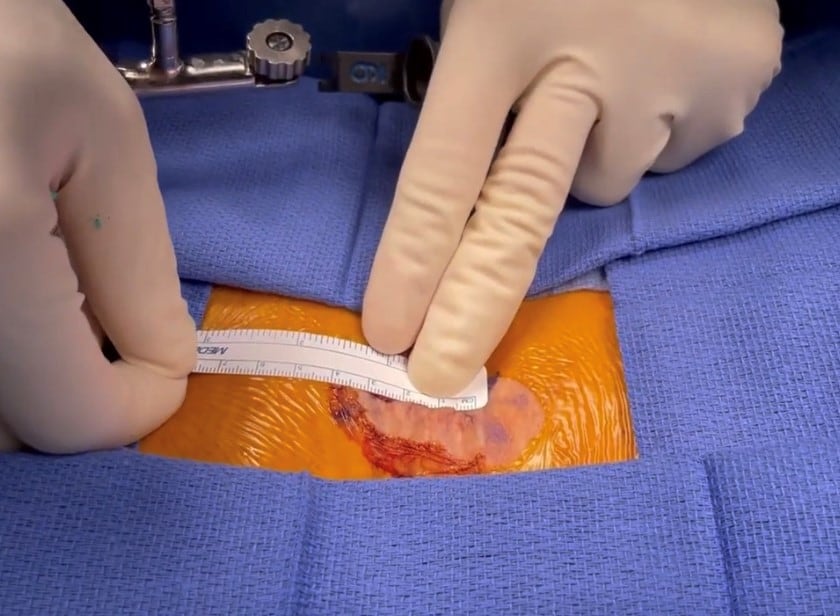
A second-level discectomy MITR (minimally invasive tubular resection) incision measuring only about an inch. #SASpine
Minimally Invasive Tubular Resection (MITR) surgery differs from the one involving the mitral valve repair in the heart. In the context of Minimally Invasive Tubular Resection, it typically refers to a surgical technique used in spinal surgery. This approach is designed to treat spinal disorders such as herniated discs, spinal stenosis, and other spine-related conditions. Here’s an overview:
- Condition Treated: MITR surgery is primarily used to address specific spinal conditions, including herniated discs, spinal stenosis, and other degenerative spine disorders.
- Procedure Technique: The surgery is performed through a small incision, using a tubular retractor to create a tunnel to the spine. This approach minimizes damage to the surrounding muscles and tissues. Surgical instruments and a microscope or endoscope are used to remove or repair the affected spinal tissue or discs.
- Minimally Invasive Nature: As a minimally invasive procedure, MITR involves smaller incisions and less muscle disruption and typically results in reduced pain and a quicker recovery than traditional open spine surgery.
- Suitable Candidates: Patients with specific spinal conditions who have not responded to conservative treatments, such as physical therapy or medication, may be candidates for this surgery. The suitability depends on the individual’s overall health and the specifics of their spinal condition.
- Recovery and Outcomes: Recovery times can vary, but generally, patients experience a faster return to normal activities than those undergoing traditional spine surgery. Outcomes often include pain relief, improved mobility, and a return to normal function.
- Risks and Considerations: While less invasive, MITR surgery still carries risks such as infection, nerve damage, blood loss, or the potential need for additional surgeries. The procedure’s success depends on factors like the patient’s overall health and the specific spinal condition being treated.
- Technological Advancements: Advances in surgical techniques, imaging technology, and instrumentation continue to refine MITR surgery, making it safer and more effective.
As with any surgical procedure, patients must consult a spine specialist to understand the risks and benefits and whether MITR or 2 Level Discectomy MITR surgery is the most appropriate option for their specific condition.

